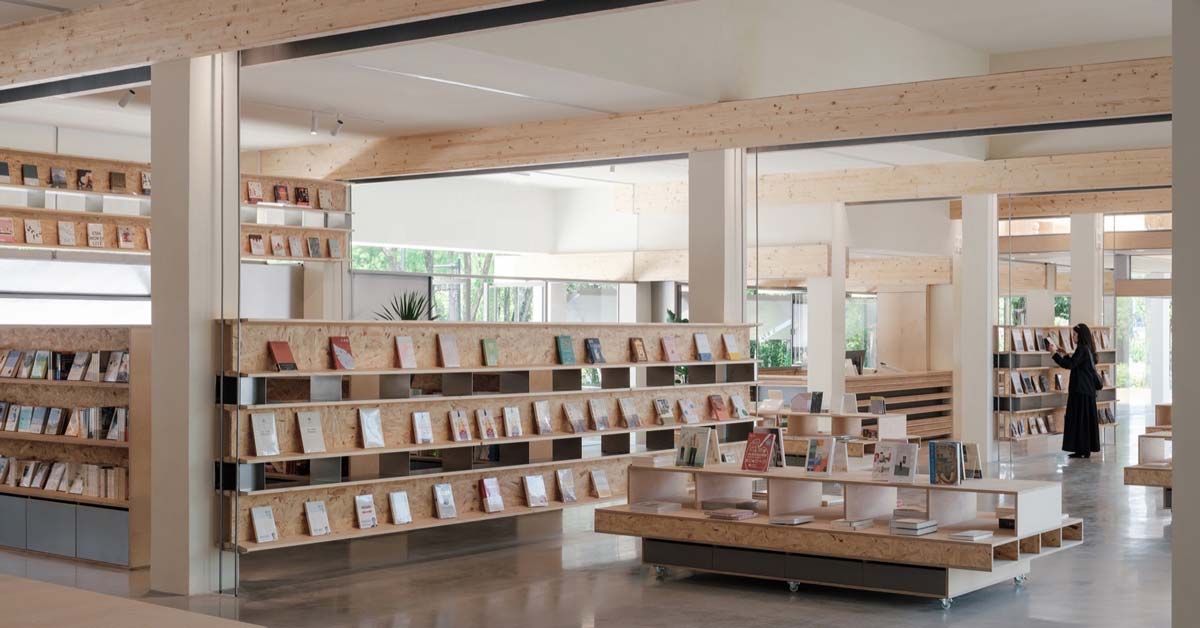Twenty years ago, an office building sat above the Xixi Wetland, located just west of Hangzhou, the capital of Zhejiang Province in eastern China.
But now, after being left behind for two decades, the space has been reinvigorated as a luminous bookstore that any bibliophile could get lost in for hours: The Xixi Goldmye Bookstore.
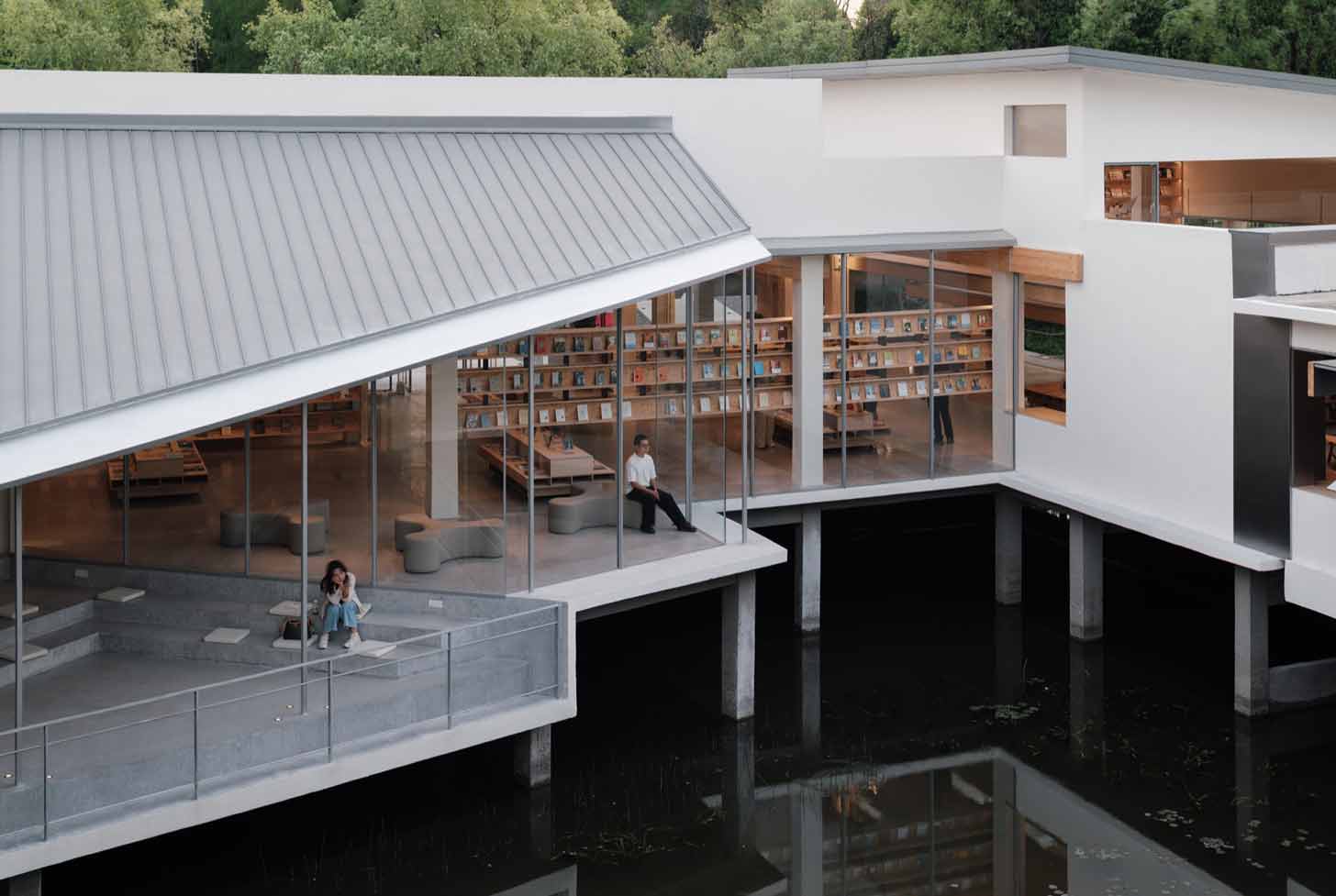
Architects at Atelier Wen’Arch took a minimalist approach to the space while working with the surrounding beauty of nature.
Once closed off and secluded, the 880-square-meter, U-shaped building now opens brightly to the Xixi National Wetland Park, complemented by three wings.
Visitors can enter the building at a horizontal entry point, lifted just above the wetlands, to shop and explore, or to simply sit and enjoy a closed water courtyard for gathering, relaxing, and taking in the scenery.
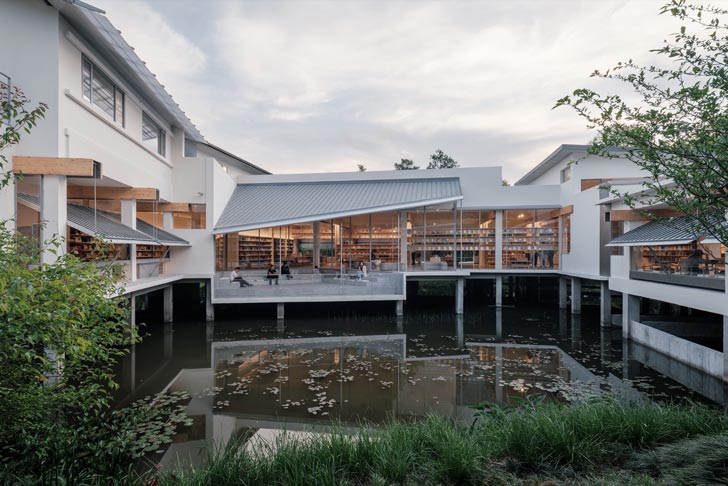
The main area contains the book display and sale area, but the north wing of the building opens up into a cafe and reading area.
The south wing is fully dedicated to a reading salon, which leads into a landscaped terrace on the second floor of the building, accessible by an outdoor staircase. Together, all of these components blend seamlessly into the natural environment, with no enclosing walls.
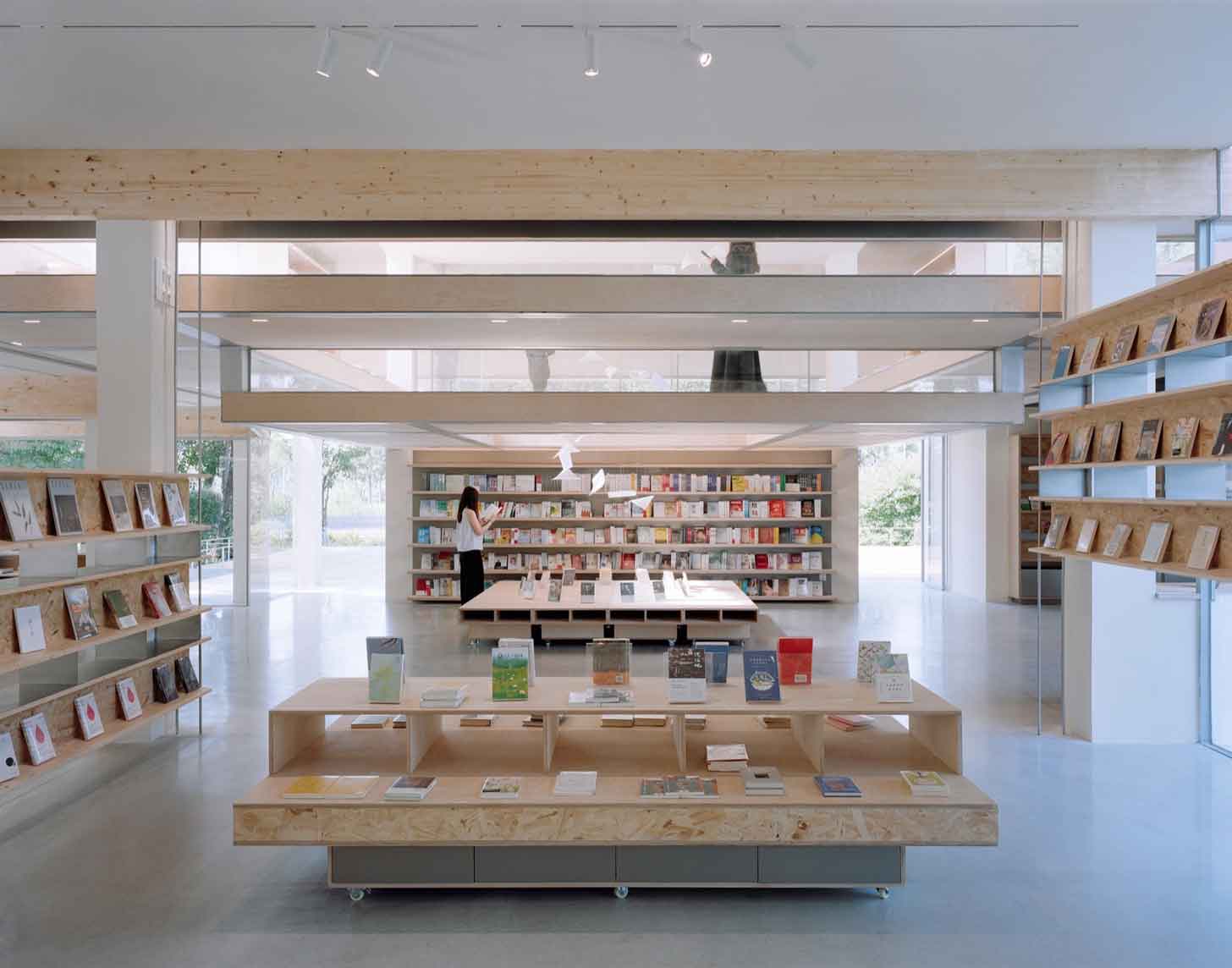
One of the standout features of the space is an elevated “Book Tower” that creates natural levels in the space, with sit-and-read spots available to visitors at varying heights. Large windows bring in ample light and artfully frame the outside greenery.
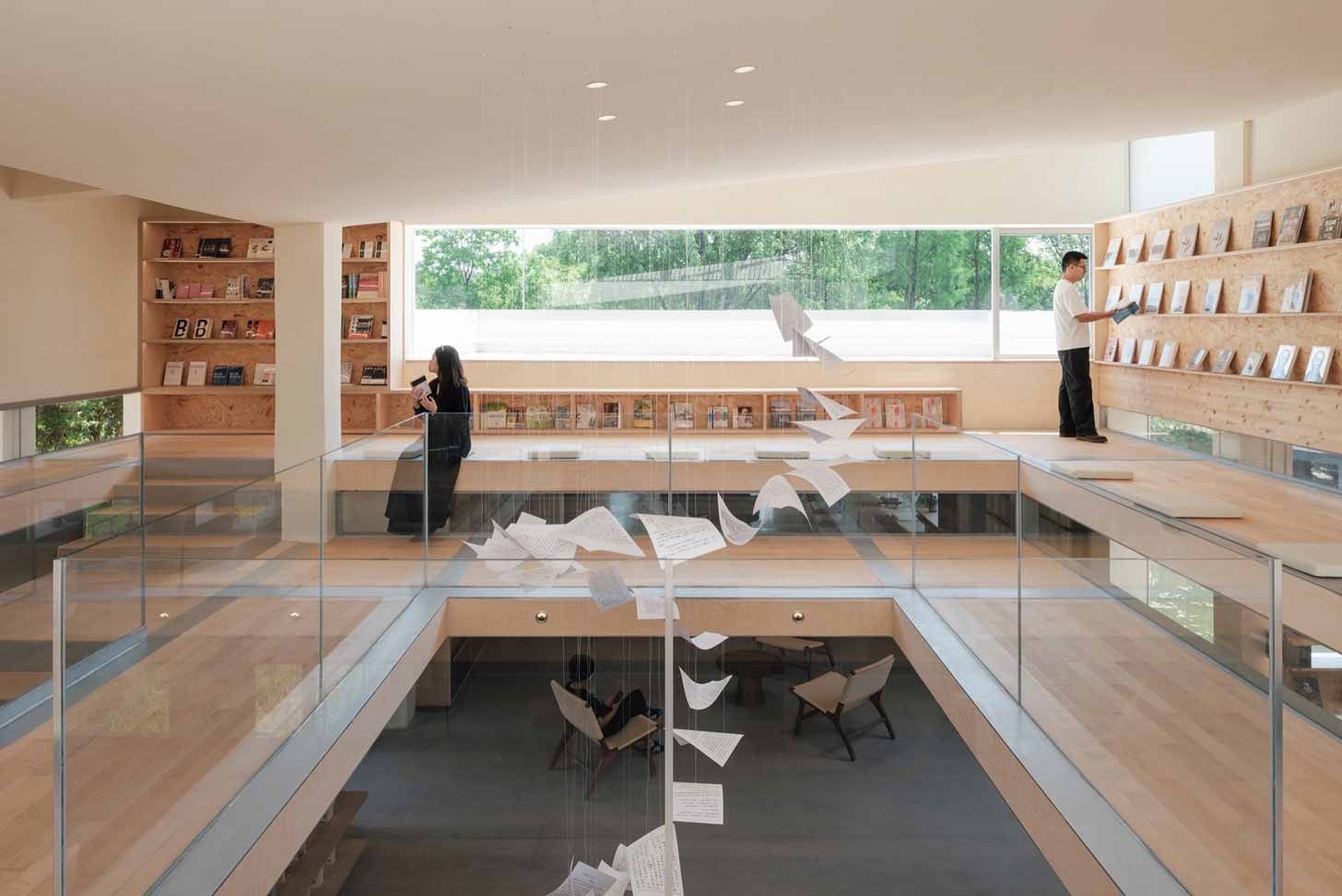
“This structural intervention aligns perfectly with the original grid while introducing warmth and human scale to what was once sterile office space,” Yanko Design describes the space. “The beams frame views of the wetland landscape, turning the surrounding nature into a living artwork visible from every reading nook.”
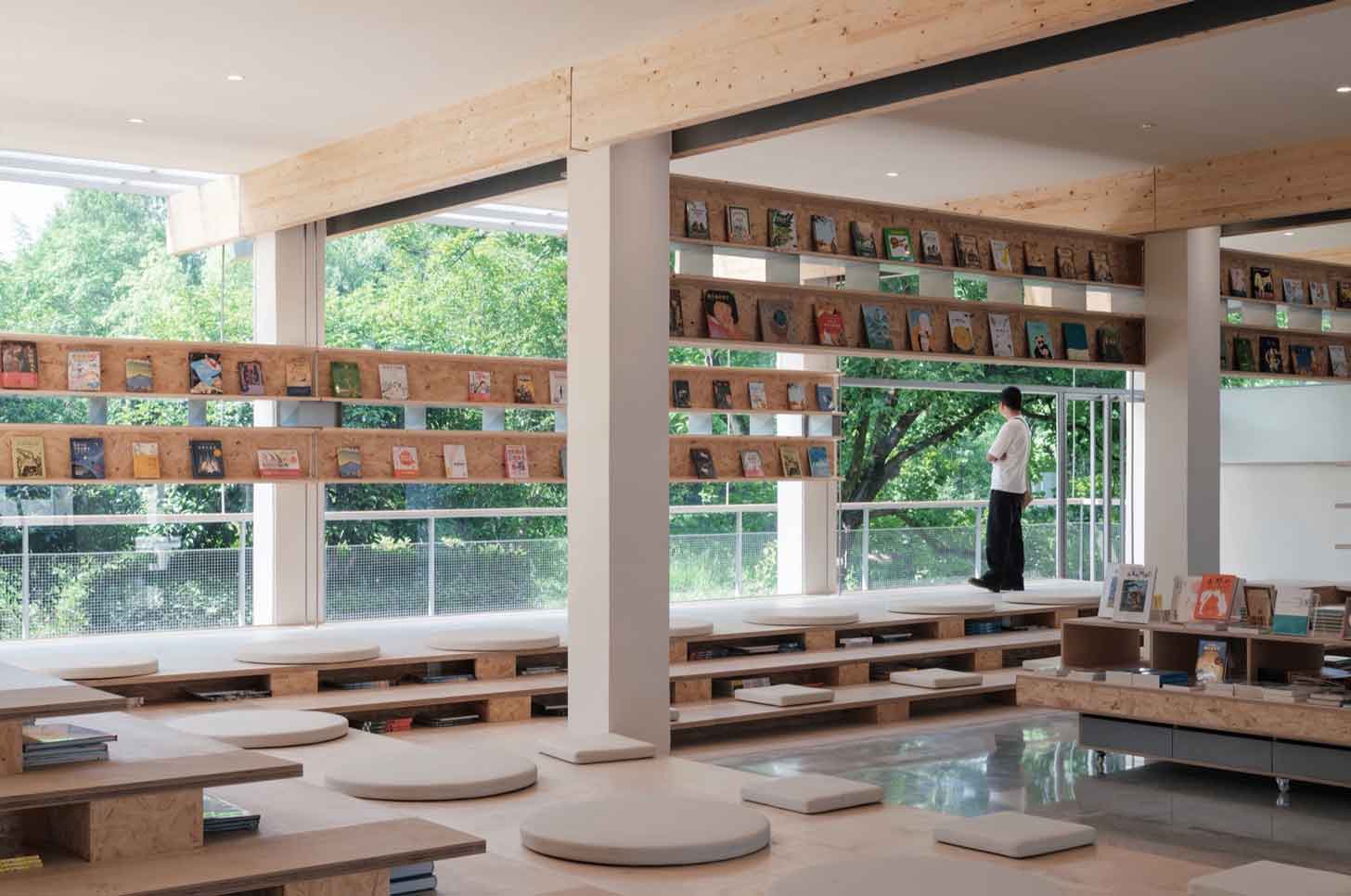
Originally, the building had an irregular glass wall facing the water, which has now been replaced with a single-sloped roof. The original flooring was also removed to create a sunken area closer to the water, utilizing the elevated beam structures to make the bookshop appear to be floating above the wetlands.
“The lowered roof and sunken floor work together to form a ‘waterside pavilion’ that integrates seamlessly with the wetland,” the architects shared in a statement.
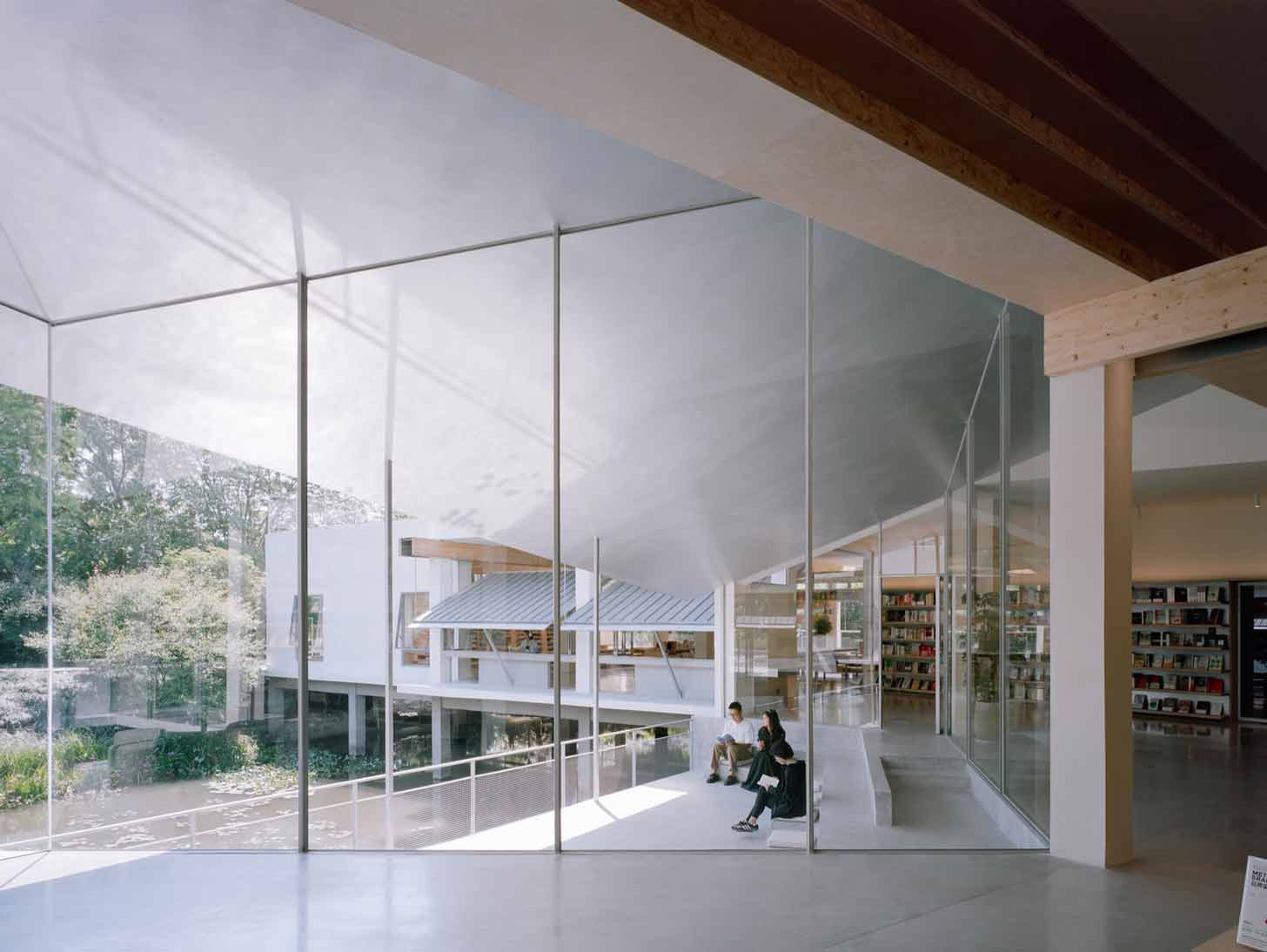
“The recessed stepped seating offers a reading field facing the wetland, allowing people to sit on three sides. At the turning point of the U-shaped plan, the pavilion is ‘ceded’ to the water courtyard, which not only produces a horizontal directional twist in the interior space but also introduces a vertical force guiding toward the wetland's water surface, thereby enhancing the spatial impact of the wetland on the interior.”
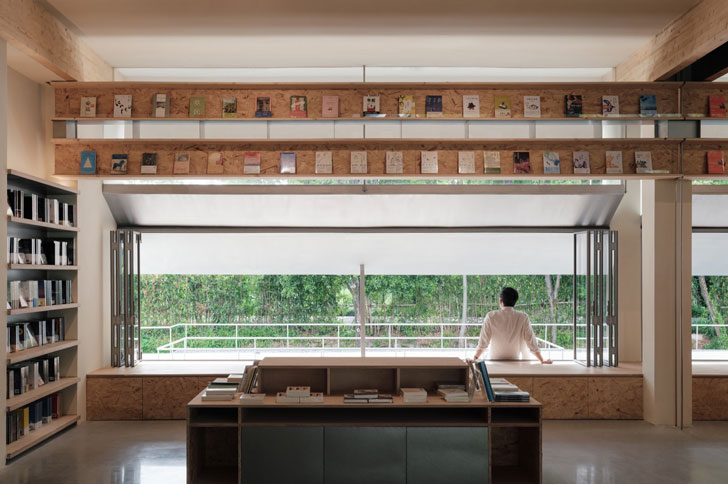
Another thoughtful detail is that the roof of the waterside pavilion is covered in titanium-zinc panels, with the interior ceiling covered in silver metallic paint. The combination creates a reflection effect on the ambient light of the building, and “each morning, the vast canopy of the waterside pavilion reflects shimmering water ripples, allowing the wetland to ‘enter’ the interior in this subtle and poetic way,” the designers write.
The goal was to create a “more comfortable indoor reading environment,” diffusing harsh light and providing a space free from major visual or environmental disturbances, so visitors can enjoy their books, the surrounding nature, or one another, in peace.
Even the bookshelves themselves were designed with this optimal experience in mind.
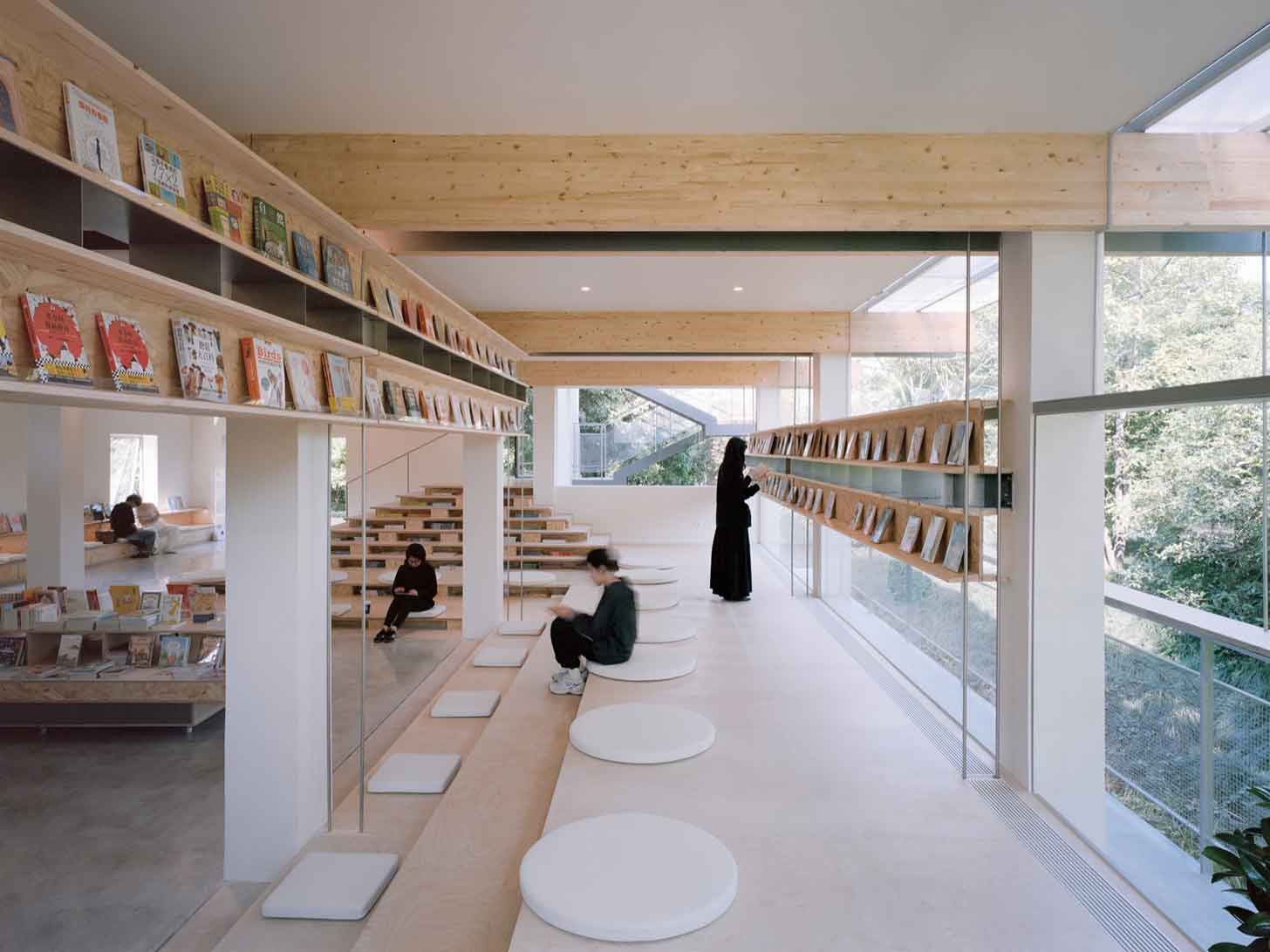
“The bookshelves are designed as specific structural elements that parasitize between the columns, transparent ‘book beams’ that allow readers to see both the books and the surrounding landscape,” the architects explain.
Created with structural engineer Zhang Zhun, the “book beams” are made from glued-laminated timber and layered with vertical stainless steel plates. They create a cross-section that maintains the necessary tension to keep the shelves suspended.
Six groups of the ‘book beams’ are staggered between columns, which float in white space to maintain a sense of openness and calm resonance with the rest of the structure’s design.
“Xixi Wetland serves as a daily place for walking and cycling among local residents. We have built a transparent and open bookstore within the wetland for people to read books and nature at the same time, becoming a public place embedded in the natural life of the city,” the designers share.
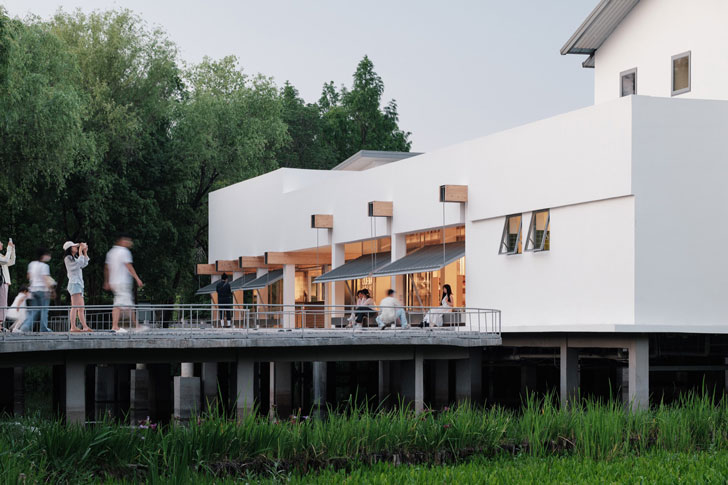
And they did it all by transforming an existing building, instead of demolishing and rebuilding something entirely new in its place.
A feat of architectural upcycling, the Xixi Goldmye Bookstore succeeds in spades and stands as a place people will want to visit — and linger in for hours on end.
“Lead architect Shen Wen’s team created something rare: A public space that serves the community while respecting its delicate wetland setting,” Yanko Design concludes.
“This bookstore is a fine specimen of how renovation can be more transformative than new construction when architects approach existing buildings with imagination, rather than demolition plans.”
Header image by Chen Hao©
